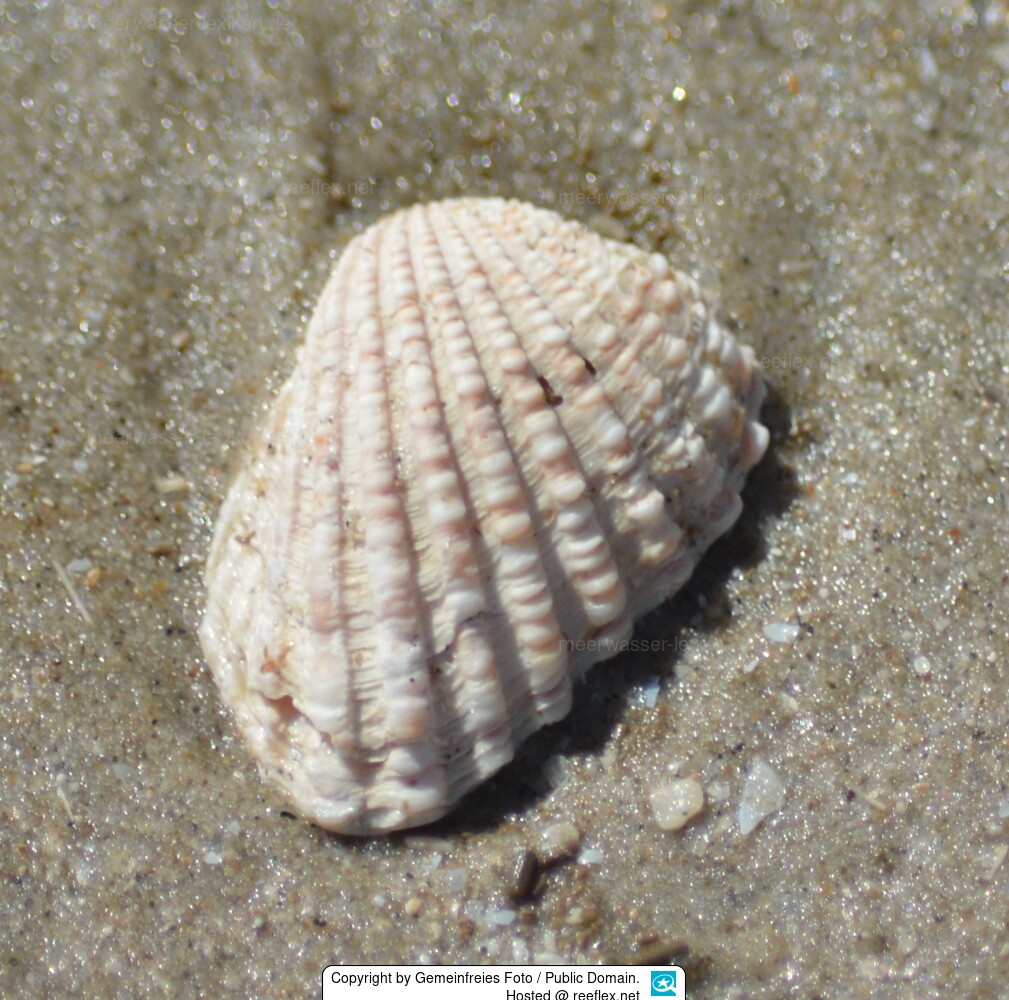Info
Cardites floridanus (Conrad, 1838)
Cardites floridanus is found in soft mud, sandy soils (e.g., seagrass beds) and firm substrates, to which the bivalve holds on with the byssus filaments.
The bivalve has a thick, firm, heavy and ovoid shape with about 15-20 coarse, rounded, bulging radial ribs crossed by concentric lines, which gives the ribs a scaly appearance.
Color: yellowish-white with reddish-purple to brown spots, inside the shells are white with small light brown spots.
Synonyms:
Cardita conradi Shuttleworth, 1856
Cardita floridanus (Conrad, 1838)
Cardita floridanus var. alba Jousseaume in Lamy, 1922
Cardita gibbosa Reeve, 1843
Cardita incrassata G. B. Sowerby I, 1825 sensu Conrad, 1832
Carditamera floridana Conrad, 1838
Cypricardia nodulosa Mighels, 1844
Cardites floridanus is found in soft mud, sandy soils (e.g., seagrass beds) and firm substrates, to which the bivalve holds on with the byssus filaments.
The bivalve has a thick, firm, heavy and ovoid shape with about 15-20 coarse, rounded, bulging radial ribs crossed by concentric lines, which gives the ribs a scaly appearance.
Color: yellowish-white with reddish-purple to brown spots, inside the shells are white with small light brown spots.
Synonyms:
Cardita conradi Shuttleworth, 1856
Cardita floridanus (Conrad, 1838)
Cardita floridanus var. alba Jousseaume in Lamy, 1922
Cardita gibbosa Reeve, 1843
Cardita incrassata G. B. Sowerby I, 1825 sensu Conrad, 1832
Carditamera floridana Conrad, 1838
Cypricardia nodulosa Mighels, 1844







 Gemeinfreies Foto / Public Domain
Gemeinfreies Foto / Public Domain



